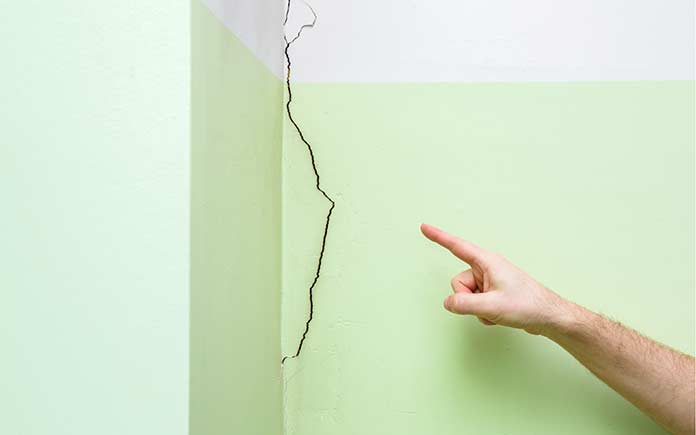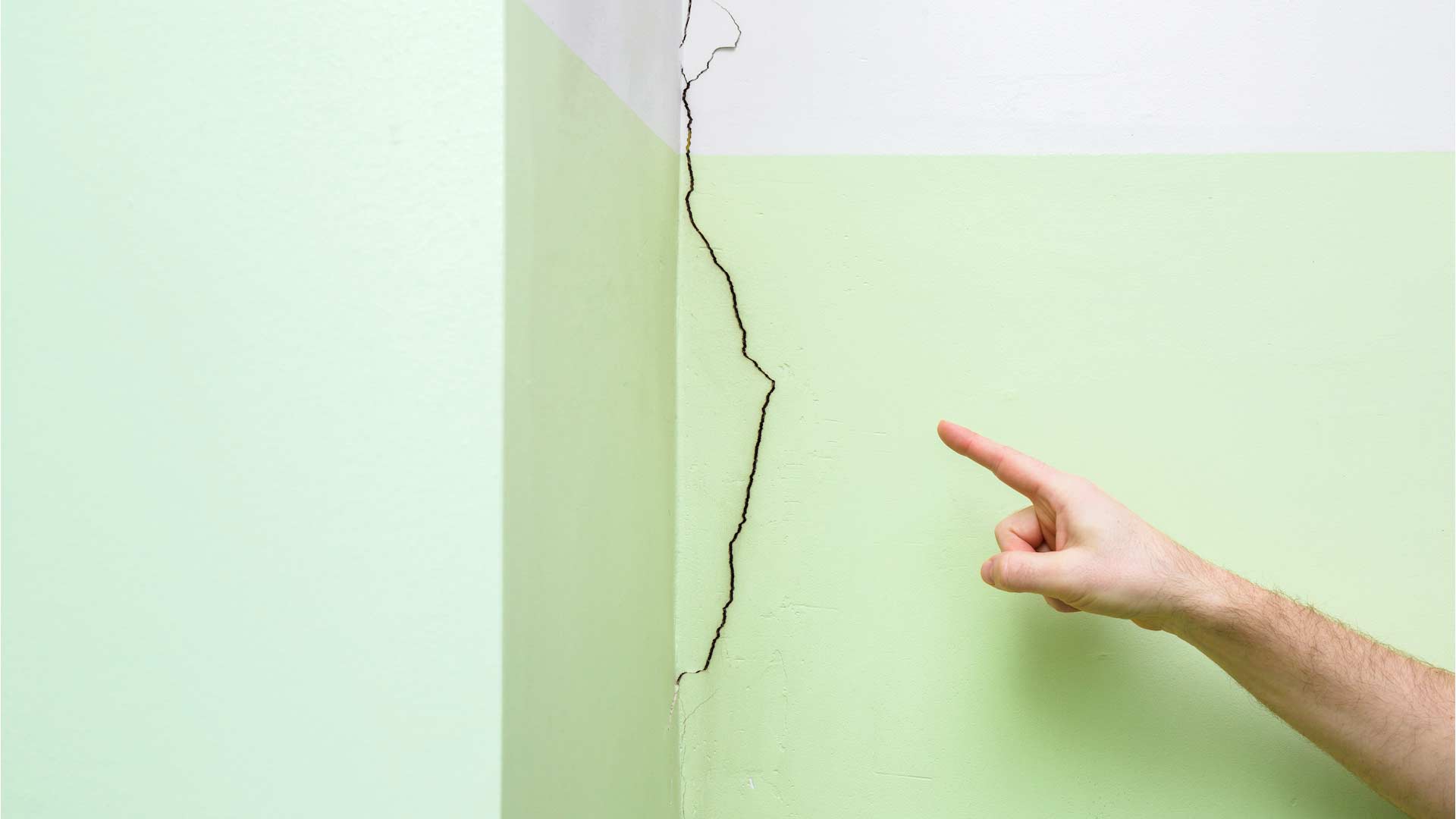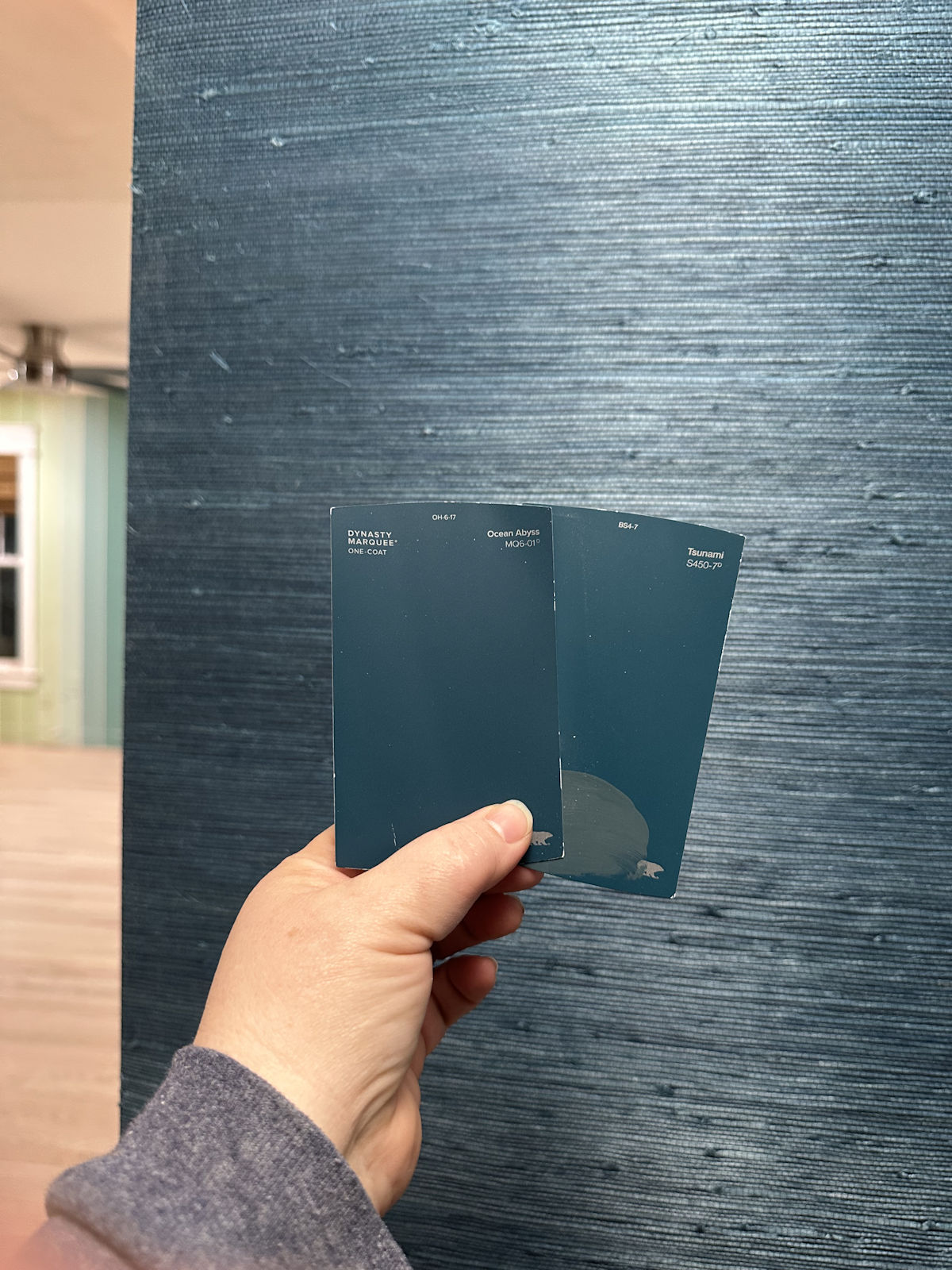
Shifting soil causes cracks in your walls and could be a sign of structural issues in your home.
Question
I bought a 10-year-old home in the spring of this year. The entire interior had been freshly painted. By late summer, two cracks developed on top of the kitchen door, one crack on one corner of a window and one horizontal crack in the hallway upstairs, about two feet off the floor. I recently discovered these hairline cracks. Is this normal? What steps do I have to consider to solve this?
Scott
Answer
The type of cracks that you describe and their location typically result from minor shifting of the home. This may surprise you, but your home is constantly moving on the soil on which it sits. Two factors determine to what extent and how often it moves. These include the type of soil, the topography of the ground that surrounds your home, the drainage systems that are designed to carry water away from the house, and, to some extent, the change of seasons.
Large amounts of water under and directly around the foundation of the house can cause the house to shift, and often cause cracking just as you have described.
Your cracks probably have recently appeared now because warm weather has dried the soil and the composition of the soil caused movement of the home. You can avoid this problem by taking the following steps:
- Install rain gutters and downspouts around the house.
- Grade all soil at the perimeter of the house so that it directs water away from the house. This goes for concrete patios and walkways — they should be poured so that water runs away from the house.
- Don’t flood landscaping adjacent to and surrounding the house.
- If the lots surrounding yours are higher, or drain onto your property, an extensive drainage system may be in order.
- And, last but not least, make sure that there is proper ventilation under the house to reduce moisture or dampness. The most common method of crawl space ventilation is to use of vents at the perimeter of the foundation.











